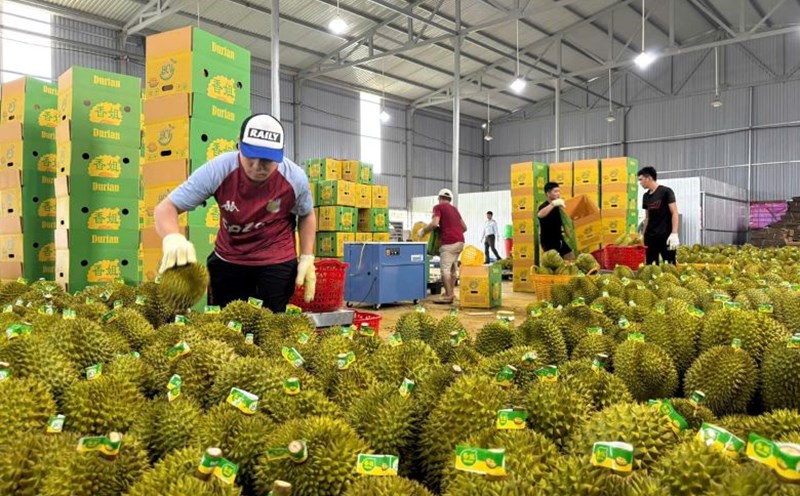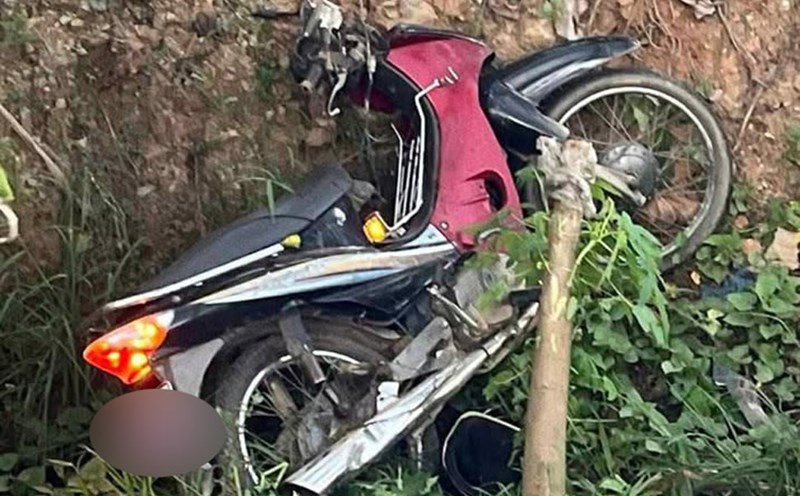In 2024, in exported vegetables and fruits, durian will maintain the championship position, contributing up to 3.3 billion USD, accounting for 46% of the total export turnover of the whole industry. China is the main consumer market, with 3.2 billion USD, accounting for 97% of Vietnam's total durian exports.
However, in the first 4 months of 2025, the total value of durian exports alone reached only 183 million USD, down 60.9% over the same period. The decline in the fruit king is said to be due to markets, especially China, tightening quality control, especially regulations on pesticide residues (such as O-ol, cadimi) and traceability.
According to Mr. Nguyen Quang Hieu - Deputy Director of the Department of Crop Production and Plant Protection (Ministry of Agriculture and Environment), as soon as it was first notified in March 2024, from China about cadimi, the Department of Crop Production and Plant Protection conducted many extensive and in-depth investigations. In addition, the Ministry of Agriculture and Environment sent a working delegation led by Minister Do Duc Duy to work with the Chinese side and achieved positive results.
In May 2025, the General Administration of Customs of China officially updated 829 growing area codes and 131 durian packaging facilities in Vietnam.
Previously, the Department of Crop Production and Plant Protection had compiled and submitted dossiers to 1,604 growing areas and 314 durian packaging facilities to the General Administration of Customs of China. After a thorough review, China has approved nearly half of the dossiers. The main harvest season for durian is concentrated from June to September, this is considered the "golden" time for this key fruit export industry to break through, soon regaining the "king of fruit" position.
Talking with Lao Dong, according to Mr. Dang Phuc Nguyen - General Secretary of the Vietnam Fruit and Vegetable Association, to revive the durian industry, we can learn from Thailand. When China issued a notice that some durian batches with Cadimi residues exceeded the threshold, Thailand immediately organized a comprehensive review of the production chain from planting, care, harvesting to packaging to determine the cause and solutions.
"Thanks to a strict multi-layer inspection process, the rate of Thai durian cleared is over 99%, with almost no risks arising during the official export process. In addition, the ability to trace the origin to each shipment and each growing area is a key point to help Thailand react quickly and accurately, helping to handle incidents on a small scale, instead of spreading risks," said Mr. Dang Phuc Nguyen.
Deputy Minister of Agriculture and Environment Phung Duc Tien said: "Regarding the shortcomings, the Ministry has directed the implementation of a system of 9 solutions to resolutely and synchronously in this year's durian crop. That is reviewing varieties, farming processes, pesticides, exports, cadimi-infected soil and especially reviewing and strictly organizing packaging facilities to ensure traceability of growing areas to packaging facilities in the direction of digital transformation. The Ministry also directed the Department of Crop Production and Plant Protection to strictly review all fertilizer import facilities".











